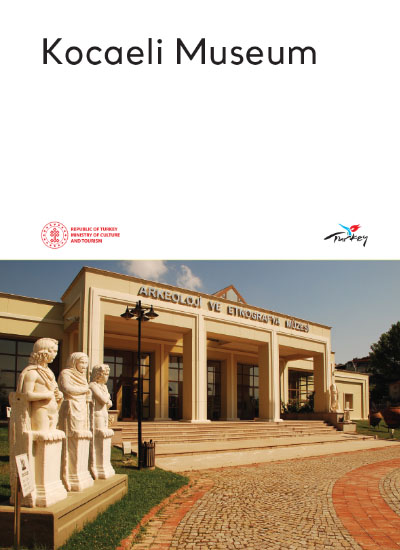The Kocaeli Archaeological Museum is situated in the 'Old Train Station' area, which comprises both old and newly constructed buildings. Of the total 19 decares area, 11 decares have been reserved for the Archaeology and Ethnography Museum. The museum area includes buildings that were originally part of the complex, such as a repair shop, water tank, and lodging building. Two old buildings have been combined to create exhibition halls and a conference room that can accommodate up to 131 people. The museum moved from Saatchi Ali Efendi Mansion to the new complex upon completion, and opened in 2007 with a renewed exhibition. The exhibition hall spans 515 squaremeter and features 2 coin cabinets, 18 archaeological cabinets, and 13 ethnographical cabinets. The Kocaeli Museum conducts salvage excavations to uncover the history of the city and analyze an average of 30,000 artifacts annually to enrich its collections. The museum's coin collection is located at the entrance. It features a wide range of coins from various historical periods, including Archaic, Classical, Hellenistic, Roman, Byzantine, Abbasids, Sassanid, Omayyad, and Ottoman. The impressive Nicomedian coinage deserves to be mentioned. Two notable coins from Nicomedia are the city commemorative coin of Nicomedes II, depicting the goddess Demeter holding the temples of Nicomedia, and the coin presented to Emperor Hadrian at the city council, showing his title 'Restitutor Nicomedia', awarded for his contributions to the reconstruction of the city after the earthquake of 123 AD. The Ethnography section showcases the elite and daily life of Ottoman culture through various installations. Selamlique, Henna Night, the world famous Turkish Bath and Cuisine Culture are some of the sections presented. The museum's main section is dedicated to archaeology. The museum displays a collection of archaeological artifacts in chronological order, starting from the Paleolithic era and ending with the Ottoman period. Visitors can learn about the Paleolithic people of Kefken from 30,000 years ago, the people who founded Astakos city in Başiskele after leaving Megara, the city that served as the capital and fourth largest city of the Roman Empire, and the city that shaped Constantine's life. One of the thematic exhibition cabinets features a shop from the Ottoman period. This display provides information on the Ahi community and exhibits products alongside a price list from 150 years ago. Another exhibition invites visitors to learn about death at Nicomedia with the phrase 'Who is the one lying here, you! wayfarer! Give a look and meet!' The cries of the orphans and widows seem almost audible when viewing this display. The open-air section of the museum exhibits sarcophagi, grave steles, pitos, and other elements from the former capital of Nicomedia.
KOCAELİ ARCHAEOLOGİCAL MUSEUMS


